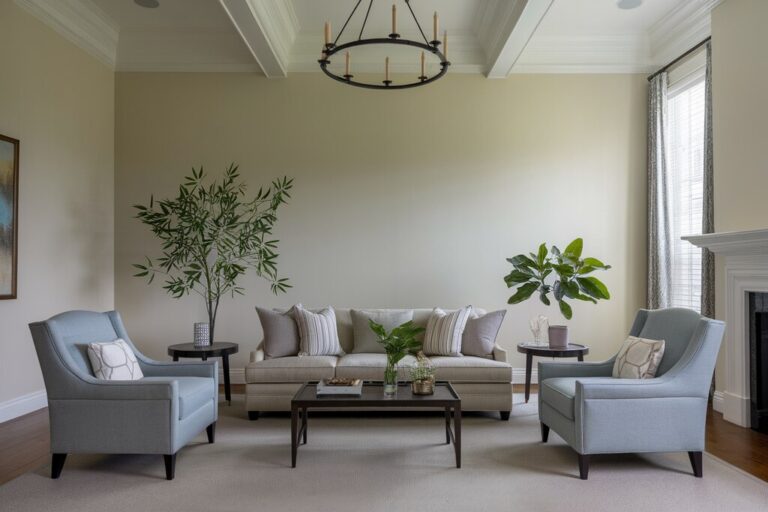In this blog, I will share the importance of proportion in interior design and how it shapes aesthetics, comfort, and functionality. Proportion refers to the relationship between objects in a space, ensuring balance and harmony.
A well-proportioned room feels natural and cohesive, while poor proportion creates visual discomfort. For example, a tiny coffee table in front of a massive sofa looks out of place, just as an oversized chandelier can overwhelm a small room.
Proportion differs from scale, though they work together. While proportion focuses on how objects relate to each other, scale refers to their size in relation to the room. Both impact how a space looks and functions. Proper proportion enhances comfort and usability by allowing smooth movement and a sense of flow.
Key Aspects of Proportion in Interior Design
Color Proportion
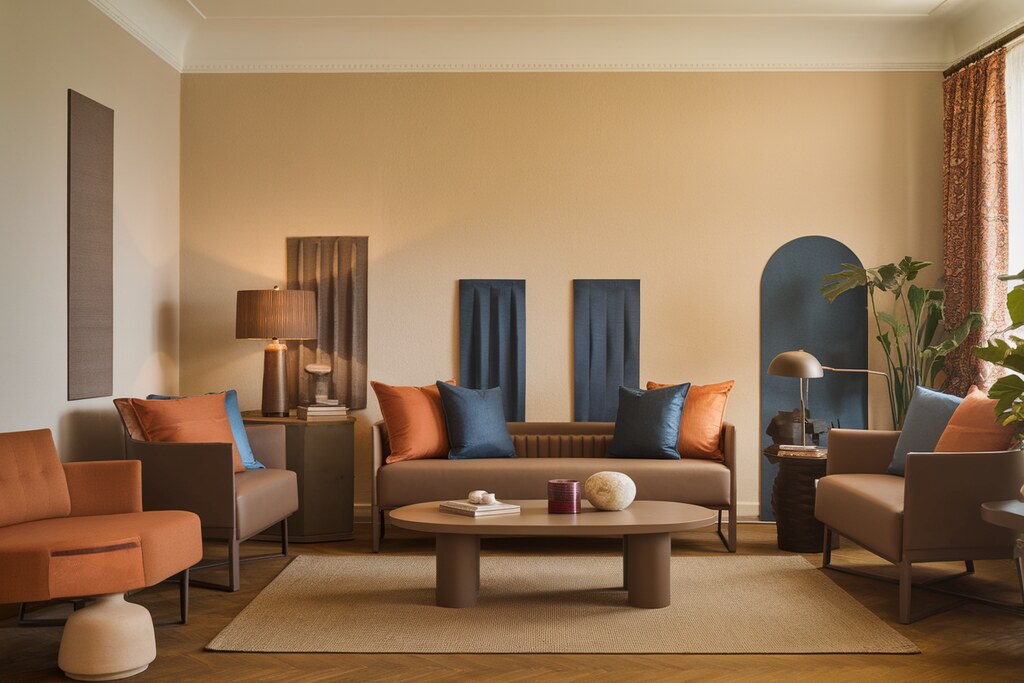
Color sets the mood of a space, and the 60-30-10 rule ensures a balanced and visually appealing design. This guideline suggests using 60% dominant color, 30% secondary color, and 10% accent color. The dominant color, often seen on walls and large furniture, creates the foundation.
The secondary color adds contrast through curtains, rugs, or smaller furnishings. The accent color provides the final touch, bringing in personality through decor, pillows, or artwork.
You can apply this rule prevents overwhelming or chaotic color schemes. Imagine a living room with neutral beige walls (60%), deep blue sofas (30%), and mustard-yellow throw pillows (10%). The mix feels intentional, adding depth and contrast.
Space Proportion
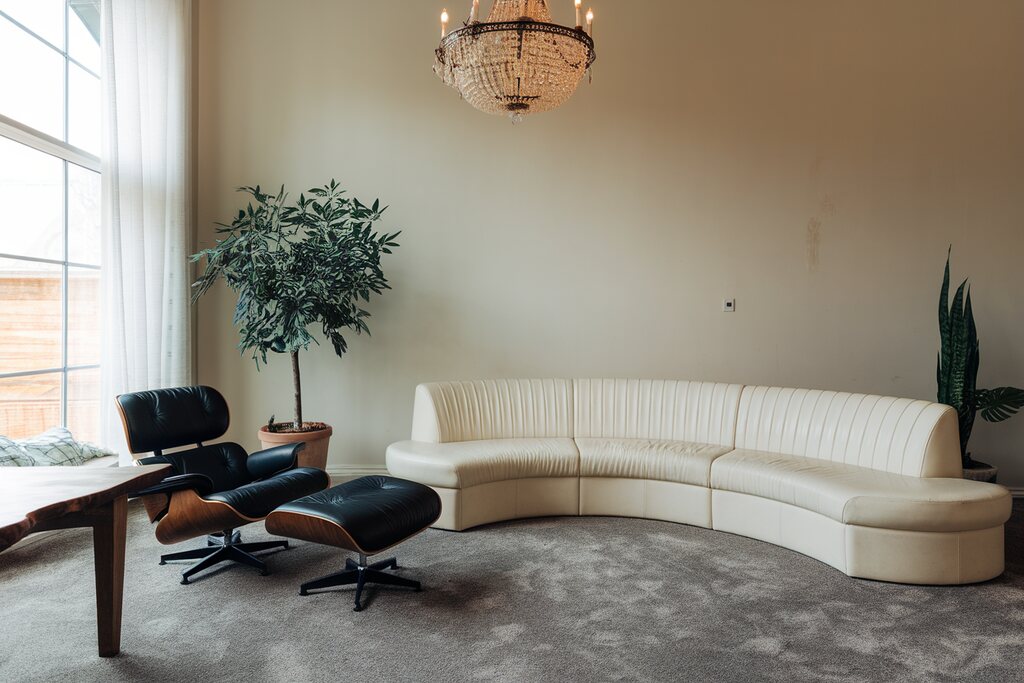
Balancing occupied and negative space is key to a well-designed room. Occupied space includes furniture and decor, while negative space is the open area between them. A cluttered room feels overwhelming, while too much empty space can make it feel incomplete.
The goal is to create a natural flow where objects feel intentional rather than forced. Think about a dining area. If chairs are crammed together, movement becomes difficult. If they are too far apart, the space feels disconnected.
Proper proportion allows for comfortable spacing, ensuring a room is both functional and visually appealing. When arranging a space, step back and assess whether it feels balanced if something seems off, adjusting the proportions can make a big difference.
Shape and Texture Proportion
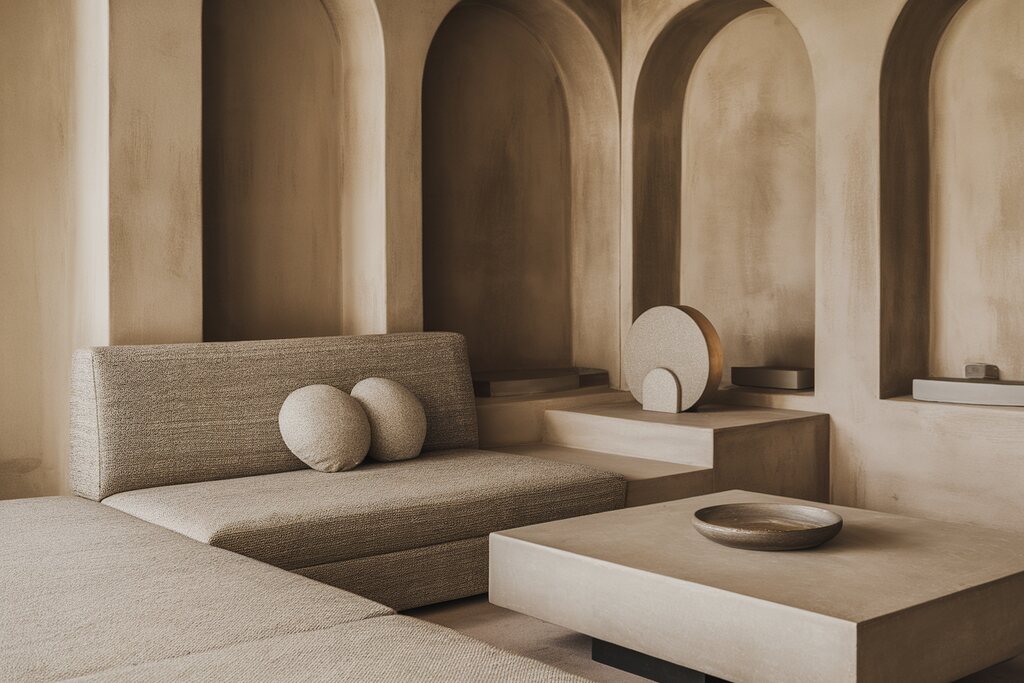
Shapes play a major role in interior design. Mixing geometric and organic shapes creates harmony and prevents monotony. A space filled with only sharp angles can feel rigid, while too many curves may lack structure. Balancing both brings a sense of stability.
For example, pairing a rectangular dining table with round pendant lights softens the look, making the space feel more inviting. Texture enhances depth and visual interest. A room with only smooth surfaces can feel flat, while too many rough textures may feel overwhelming.
A well-proportioned mix such as a plush rug against a sleek coffee table, adds warmth and contrast. Whether choosing materials or arranging decor, proportionate use of shape and texture ensures a space feels dynamic and well thought out.
Light Proportion
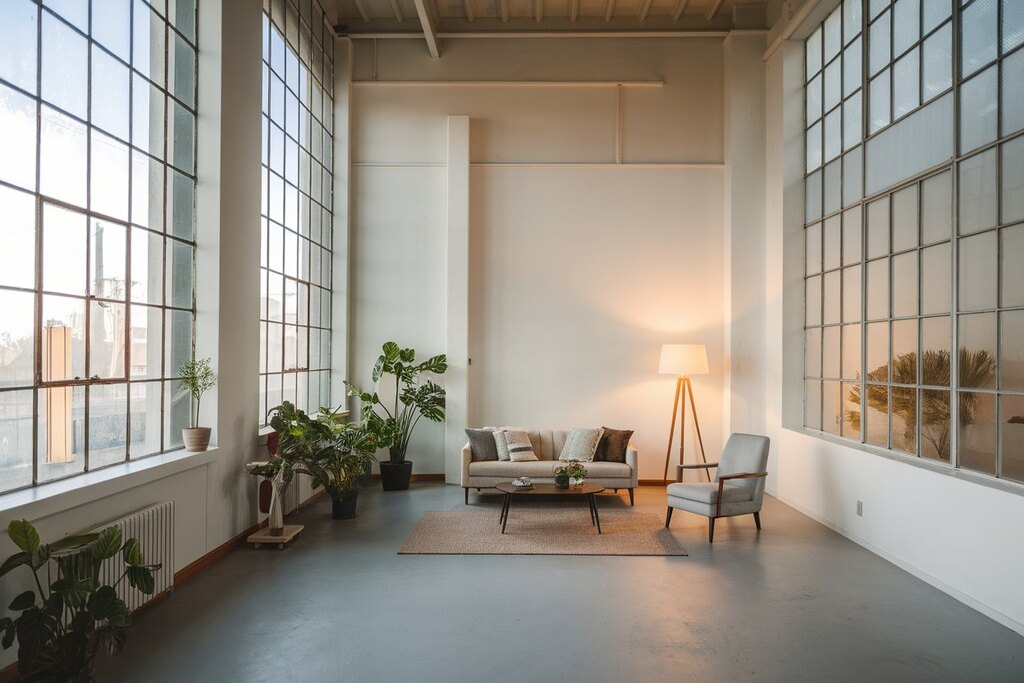
Lighting affects both the functionality and atmosphere of a room. A good mix of natural and artificial light creates a balanced and inviting space. Relying solely on overhead lighting can make a room feel harsh, while too much indirect lighting may leave it feeling dim.
The key is layering different light sources to suit the room’s purpose. For example, in a living room, natural light from windows provides brightness during the day, while table lamps and floor lamps add warmth in the evening.
In a workspace, task lighting ensures visibility without glare. Well-proportioned lighting enhances a room’s features, highlights decor, and improves usability. When light is balanced, a space feels both functional and comfortable.
Principles for Achieving Proper Proportion
The Golden Ratio & Rule of Thirds
The Golden Ratio (1:1.618) is a mathematical principle used to create visually pleasing proportions. In interior design, it helps determine the ideal size and placement of furniture, decor, and architectural elements.
For example, a sofa that takes up about two-thirds of a wall follows this ratio, making the space feel balanced and natural. The Rule of Thirds is another guideline that divides a space into three equal parts, both horizontally and vertically.
You can place key elements like artwork or a focal piece of furniture along these lines creates a structured yet effortless look. Instead of centering everything, try positioning a statement piece slightly off-center to create visual interest without disrupting harmony.
The Role of Negative Space
Negative space, or empty space, is just as important as the elements in a room. It prevents overcrowding and allows the eye to rest. When used correctly, negative space enhances flow and makes a room feel more spacious.
You can consider a gallery wall. If frames are packed too closely, the display looks cluttered. But when spaced properly, each piece stands out.
Similarly, in a living room, leaving space around furniture prevents a cramped feel. Always step back and assess whether the room has enough breathing room to feel balanced.
Furniture and Focal Points
A well-proportioned room starts with a focal point a sofa, bed, dining table, or fireplace. Everything else should complement this main piece rather than compete with it. Arranging furniture in proportion to the room ensures balance and functionality.
For example, a small coffee table in front of an oversized sectional looks out of place, while a dining table that’s too large for the space makes movement difficult.
Firstly measure your furniture and room dimensions before arranging items. Ensure each piece feels connected rather than floating or overpowering the space.
Decorative Elements and Accessories
Decor should enhance, not overwhelm, a space. The right proportions for rugs, curtains, and wall art create a polished look. A rug should be large enough to anchor furniture, not just float in the center.
Curtains should extend beyond window frames to make ceilings feel higher. When arranging smaller decor, group items in odd numbers for balance. A cluster of three vases or candles looks more natural than an even-numbered arrangement.
You can keep accessories scaled to their surroundings too many small objects feel cluttered, while oversized pieces can dominate the space. Thoughtful placement ensures a well-curated and harmonious design.
Practical Applications
Examples of Proportion in Well-Designed Interiors
Furniture should match the room’s scale. A small loveseat in a large space feels lost, while oversized furniture in a compact room disrupts flow. A sectional suits a spacious living area, while a sleek bed works best in smaller rooms.
The Golden Ratio helps balance furniture and decor. A focal point, like a bed or dining table, should take up about two-thirds of the space. In dining areas, at least three feet of clearance around the table improves comfort and functionality.
Rug size affects proportion. A rug should anchor furniture, not float awkwardly. In a living room, it should extend under front legs. In a dining area, it must go 24 inches beyond the table for chair movement.
Wall art should match the space. Small frames on a large wall look disconnected, while oversized pieces overwhelm small areas. A large artwork above a sofa or a gallery wall helps create balance.
Common Proportion Mistakes and How to Fix Them
Furniture that’s too big or small disrupts proportion. A bulky sectional in a tight space feels cramped, while a tiny coffee table in a large seating area looks misplaced. Measure your room before buying furniture to ensure a proper fit.
Overcrowding decor makes a space feel cluttered. Leaving negative space improves flow. Too much empty space, however, feels unfinished. Balance is key.
Wall art placement often goes wrong. Small frames on a big wall seem insignificant, while oversized pieces dominate small spaces. Artwork should take up 60-75% of the width of furniture below it.
Rugs that are too small create a disconnected look. A rug should extend under key furniture pieces. In a dining area, it must be large enough to allow chairs to slide in and out comfortably.
Lighting should match the room’s scale. A small pendant over a large table looks weak, while uneven lighting creates imbalance. Use a mix of overhead lights, lamps, and sconces for even illumination.
Conclusion
Proper proportion creates a space that feels balanced and visually appealing. You can choose furniture that suits the room’s scale, maintaining negative space, and using the Golden Ratio help achieve harmony. Well-sized rugs, lighting, and decor enhance functionality without overpowering the space.
Proportion allows flexibility in design. Experimenting with different layouts and adjustments helps create a home that is both comfortable and uniquely yours.
FAQs
What is proportion in interior design?
Proportion refers to the relationship between design elements like furniture, decor, and space. It ensures balance and harmony by maintaining proper size ratios between objects. A well-proportioned space feels visually appealing and comfortable.
How does proportion differ from scale?
Proportion is the relationship between objects, while scale refers to their size relative to the room. A large sofa in a small room may be out of scale, but its elements (like cushions and armrests) can still be proportionate.
Why is proportion important in design?
Proper proportion prevents spaces from feeling cluttered or empty. It enhances aesthetic appeal, ensures comfort, and maintains balance in a room. A well-proportioned space feels natural and visually pleasing.
What is the 60-30-10 rule in proportion?
This color proportion rule suggests using 60% dominant color, 30% secondary color, and 10% accent color to create a visually balanced interior. It prevents overwhelming or underwhelming color distribution.
How do I achieve good proportion in furniture arrangement?
Choose a focal point (like a bed or sofa) and arrange other pieces around it. Use the Golden Ratio (1:1.618) or the Rule of Thirds for balance. Ensure furniture is neither too large nor too small for the space.
How does lighting affect proportion?
Balanced natural and artificial light can make a space feel larger or cozier. Oversized light fixtures may dominate a room, while small ones may be ineffective. Lighting should complement furniture and ceiling height.
What happens when proportion is ignored?
Ignoring proportion results in cluttered or sparse interiors, making a room feel awkward. Oversized furniture can overwhelm a space, while undersized pieces may look lost. Proper proportion ensures harmony.

